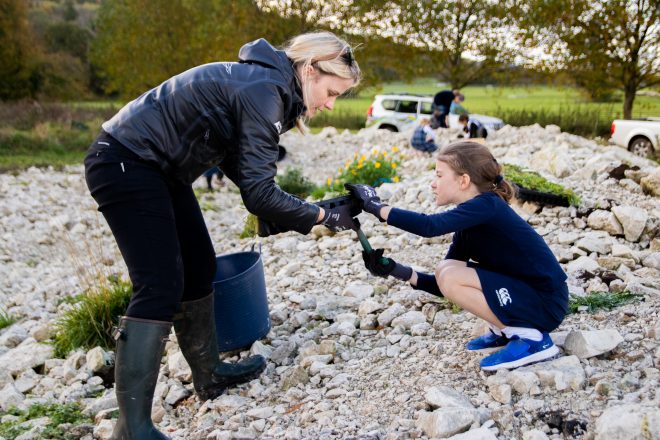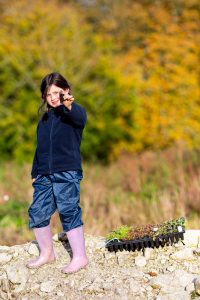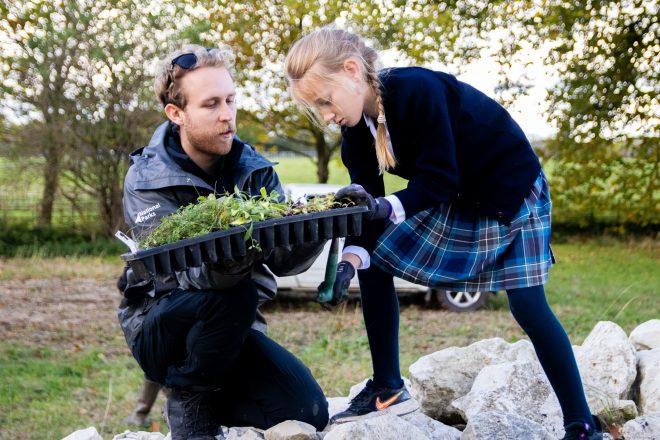Big conservation effort at school will help butterflies thrive
April 6, 2022

Schoolchildren have teamed up with National Park rangers to create a new wildlife corridor to help butterflies and moths flourish.
A thousand plug plants have gone into the ground at Seaford College, near Petworth, to create a south-facing “butterfly bank” that rangers hope will be teeming with life by the summer.
Around 30 children rolled up their sleeves to help plant a variety of specially-chosen plants and wildflowers. The plants, such as Vipers Bugloss, Agrimony, and Birdsfoot Trefoil, will provide much-needed food for caterpillars that will later transform into butterflies and moths.
It’s hoped the butterfly bank will support a large variety of species, including the Common Blue, Marbled White, Green Hairstreak, and rarer species, such as the Grizzled Skipper, Duke of Burgundy and Small Blue.
The planting comes after rangers helped the school transform an old waste area, creating a new bank that replicates the chalky habitat on the South Downs that attracts butterflies.
 Charles Winchester, Ranger for the Wealden Heath team of the National Park, said: “It was a fun day and all the children got really enthusiastic about the planting, despite some showery downpours!
Charles Winchester, Ranger for the Wealden Heath team of the National Park, said: “It was a fun day and all the children got really enthusiastic about the planting, despite some showery downpours!
“The South Downs National Park is internationally-renowned for its butterfly and moth biodiversity, but like all wildlife, these animals need our help in order to flourish. As well as being incredibly beautiful, these butterflies are important pollinators and are a lynchpin of so many ecosystems here in the south east of England.
“It’s great to see young people getting involved in conservation action that will make a big difference. We can’t wait to see this butterfly bank blazing with colour later this year!”
Where plug plants were not available, the team scattered a range of seeds across the site, including Kidney Vetch and Sheep’s Fescue – all favourite snacks for caterpillars.
And Charles added: “This project links with some work we did on the site last year to establish around a hectare of new species-rich chalk grassland. Ultimately, our aim is create a wildlife corridor, particularly for butterflies, linking Seaford College with nearby nature reserves at Graffham and Heyshott. Connecting habitats allows wildlife to move through the landscape, creating a more resilient and stronger ecosystem.
“This project is a fantastic example of ‘ReNaturing’, creating new spaces for nature to thrive.”
Julian Hart, Deputy Head of Prep School and teacher of Countryside Management, said “Our children thoroughly enjoyed the opportunity to work with rangers and make such a positive contribution to our local environment. This work ties in with a college-wide bid to gain the coveted Eco-Schools Green Flag award this year by contributing to our work on enhancing the ‘school grounds’ and ‘biodiversity’.”

